Origins and domestication of the olive (Review)
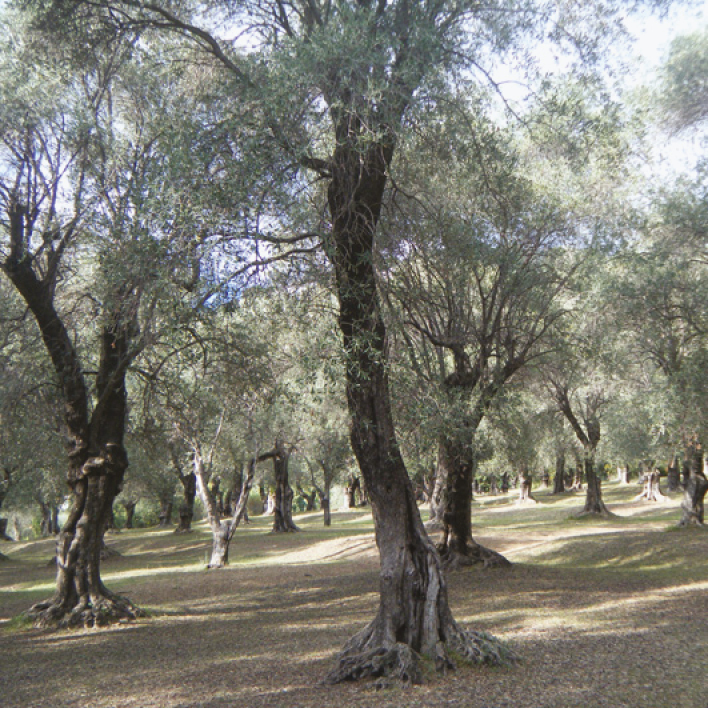
Annals of Botany 121: 385–403, 2018
doi: 10.1093/aob/mcx145
The olive, Olea europaea (Oleaceae), is an iconic species in Mediterranean agriculture yet its origin is complex. Besnard et al. review the literature on the timeline of Mediterranean olive evolution and discuss the questions that remain unanswered. They also propose new avenues of multidisciplinary approaches to investigate the ecological genomics of olive domestication. These findings offer a roadmap which may help to unravel the puzzle of olive domestication and more generally the evolutionary processes involved in phenotypic and molecular evolution, and adaptation of perennial crops, thereby contributing to the sustainable management of olive germplasm and agrosystems, particularly in the current context of global change.
Authors: Guillaume Besnard, Jean-Frédéric Terral, and Amandine Cornille
Photoinhibition of seed germination in Lilioids (Research in Context)
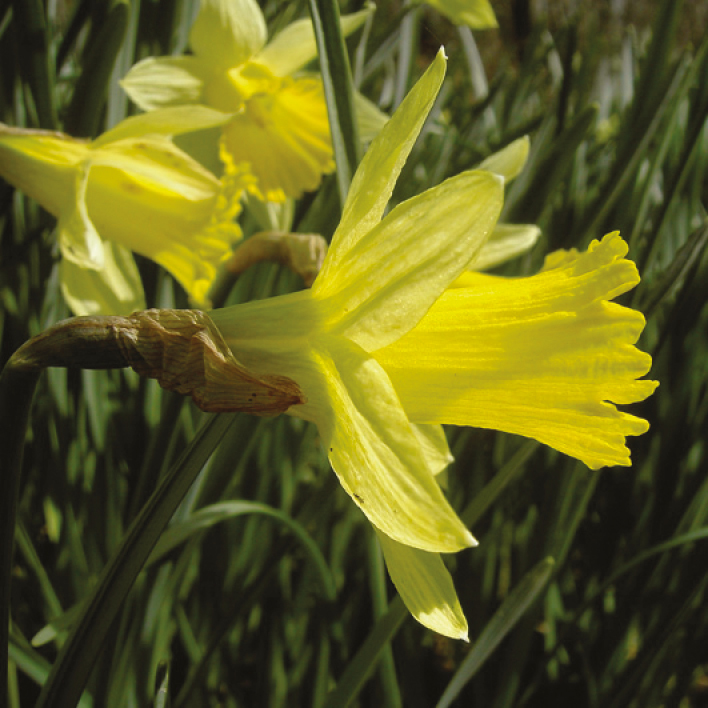
Annals of Botany 121: 405–413, 2018
doi: 10.1093/aob/mcx147
Some seeds do not germinate when they are exposed to light. To understand the evolution of photoinhibition, Vandelook et al. analyse how this trait relates to habitat preference, local climate conditions, seed traits and temperature conditions during germination. A dataset of germination responses in light and darkness of about 150 Liliod monocots is compiled and interpreted within a phylogenetic framework. Closely related species show a similar germination response to light. Photoinhibition is shown to correlate with plant traits, namely seed coat colour, seed mass and plant height, and is also linked to levels of habitat light and moisture.
Authors: Filip Vandelook, Rosemary J. Newton, and Angelino Carta
The development of Ramularia leaf spot disease in barley
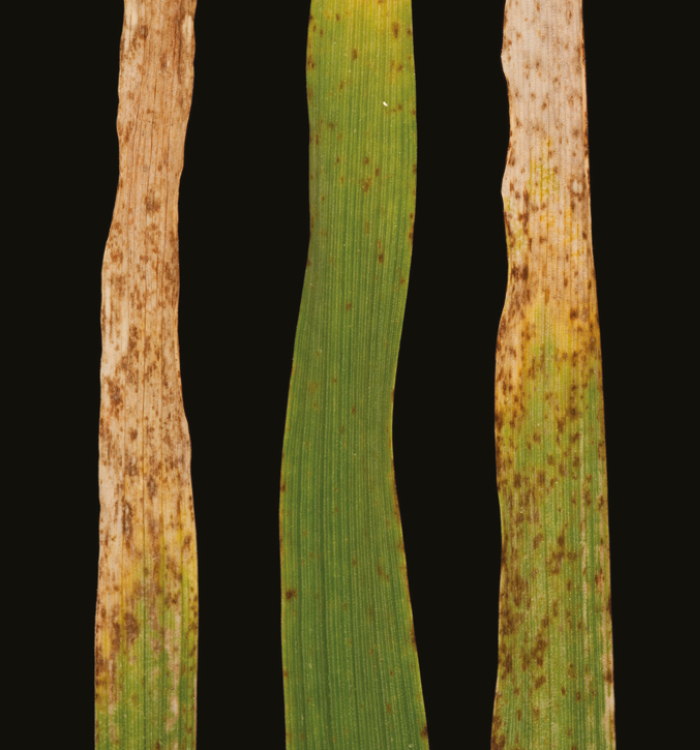
Annals of Botany 121: 415–430, 2018
doi: 10.1093/aob/mcx170
The fungus Ramularia collo-cygni (Ascomycotina) has recently become an important pathogen of barley (Hordeum vulgare), causing leaf spotting on upper leaves. McGrann and Brown studied the factors that cause this fungus to change from a harmless endophyte to an aggressive, necrotrophic parasite, contrasting susceptible varieties with one which has strong partial resistance. Changes in concentrations of reactive oxygen species in host leaves caused leaf spot symptoms to develop, but foliar senescence alone did not cause disease expression. A better understanding of the aetiology of Ramularia leaf spot can lead to improvements in methods of selecting barley varieties with stronger partial resistance.
Authors: Graham R.D. McGrann, James K.M. Brown
Early Palaeocene fossil flowers of Patagonia
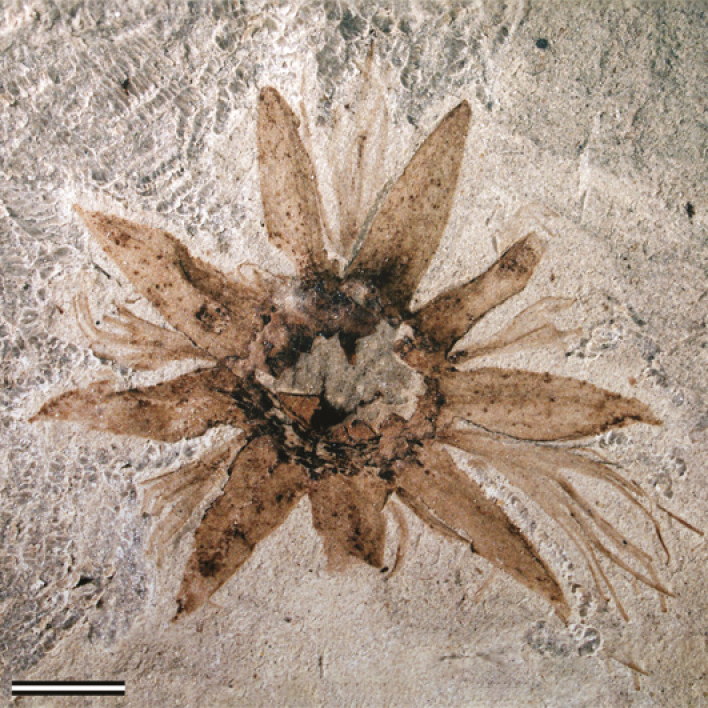
Annals of Botany 121: 431–442, 2018
doi: 10.1093/aob/mcx173
Sixty-four million years ago, this elaborate flower grew in Patagonia, Argentina. The new species described by Jud et al. is named Lacinipetalum spectabilis Jud, Gandolfo, Iglesias & Wilf, gen. et. sp. nov. It was part of the flora that colonized coastal southern South America in the early Paleocene Salamanca Formation after the end-Cretaceous extinction event. This fossil was gently buried in a muddy channel, preserving the sepals and the delicate, fringed petals. It is most closely related to the tribe Schizomerieae in the Cunoniaceae, a group that includes the New South Wales Christmas bush. They are native to Australasia and South Africa, but no longer occur in South America.
Authors: Nathan A. Jud, Maria A. Gandolfo, Ari Iglesias, and Peter Wilf
Thermal acclimation of photosynthesis and dark respiration in white spruce
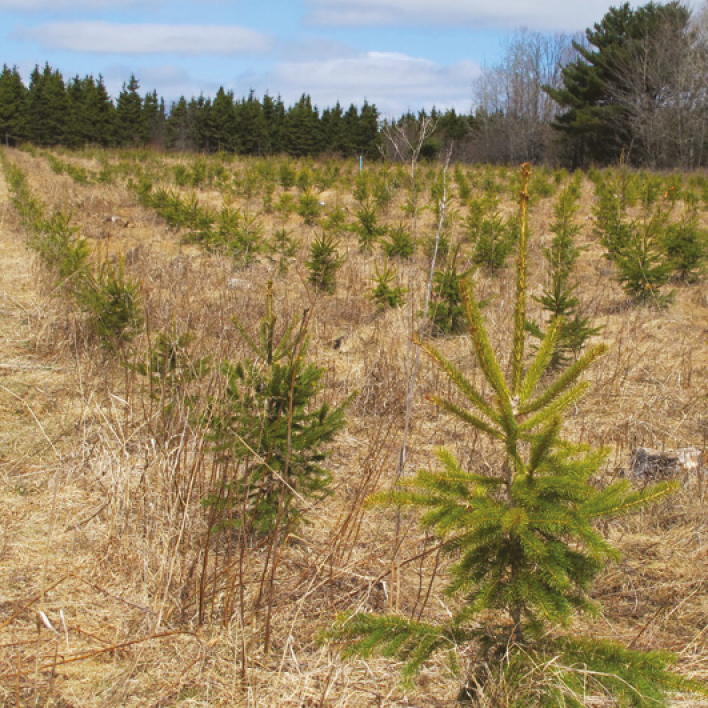
Annals of Botany 121: 443–457, 2018
doi: 10.1093/aob/mcx174
Understanding how physiological processes involved in net CO2 exchange acclimate to warmer conditions is fundamental to predict the capacity of tree species to adapt to future climate change. Benomar et al. use eight young forest plantations established along a gradient of 5.8 °C in the eastern boreal forest of Canada to examine thermal acclimation of photosynthesis and respiration of seeds from northern and southern white spruce (Picea glauca) seed orchards. They conclude that moderate thermal acclimation of respiration and lack of thermal acclimation of photosynthesis may constrain growth and survival of local white spruce seed sources in future climate and thus, argue in favour of assisted population migration.
Authors: Lahcen Benomar, Mohammed S Lamhamedi, Steeve Pepin, André Rainville, Marie-Claude Lambert, Hank A. Margolis, Jean Bousquet, and Jean Beaulieu
Traits control the digestibility-decomposition relationship
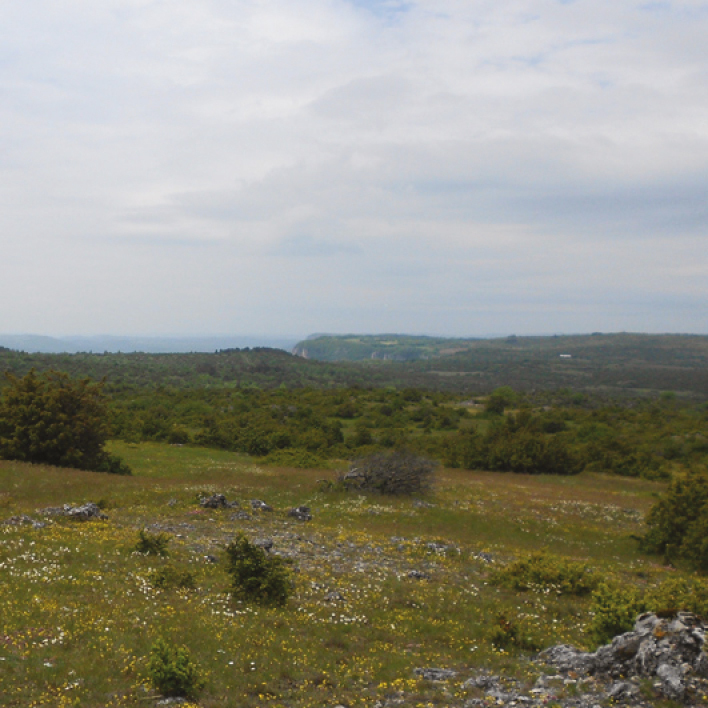
Annals of Botany 121: 459–469, 2018
doi: 10.1093/aob/mcx175
Forage quality for herbivores and litter quality for decomposers are two important plant properties affecting ecosystem carbon and nutrient cycling. In agreement with “afterlife” effect hypothesis, Bumb et al. find a positive relationship between digestibility and decomposition for both leaves and stems of 16 species from low productive Mediterranean rangelands. The two degradation processes are shown to be strongly driven by the fibre concentration and the dry matter content of organs. This study demonstrates the key role of plant traits to link above and below ground processes, which involve different types of organisms in the ecosystem.
Authors: Iris Bumb, Eric Garnier, Sylvain Coq, Johanne Nahmani, Maria Del Rey Granado, Olivier Gimenez, and Elena Kazakou
Inflorescence arrangement and nursery pollinator occupancy
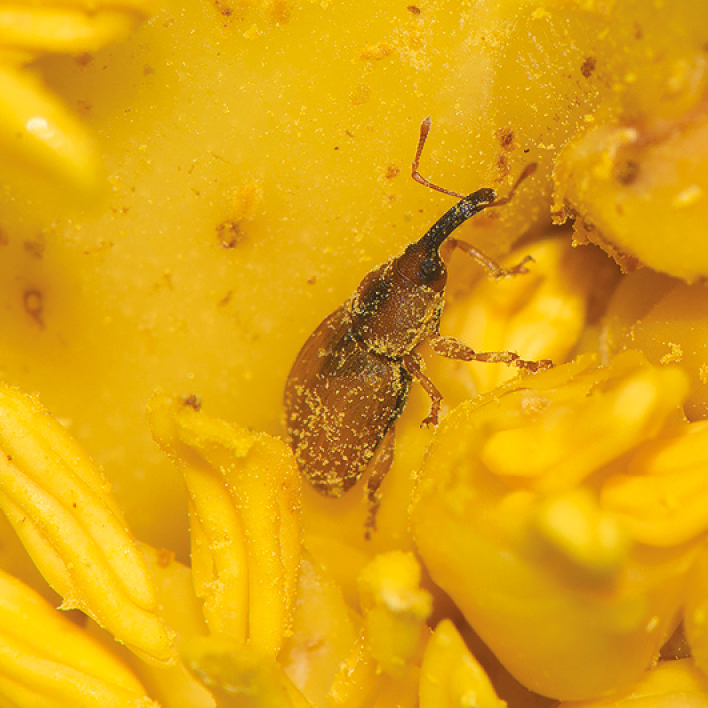
Annals of Botany 121: 471–482, 2018
doi: 10.1093/aob/mcx177
Nursery pollination systems are excellent biological models to study how obligated plant-insect mutualisms function and have evolved. Jácome-Flores et al. investigated whether and how the spatial distribution, sex, and flowering synchrony of Chamaerops humilis (Arecaceae) relates to host occupancy by the larvae of its pollinator, the palm flower weevil, Derelomus chamaeropsis (Coleoptera). Interestingly, the remarkable dispersal ability of D. chamaeropsis rather than the host plant spatial distribution (highly aggregated) was the primary determinant of pollinator occupancy. Jácome-Flores et al. also reveal new costs and benefits of such interaction, where flowering synchrony and a high inflorescence number appeared to reduce the costs inflicted by the herbivorous pollinator larvae.
Authors: M. E. Jácome-Flores, Miguel Delibes, Thorsten Wiegand and José M. Fedriani
Cracking the omega code: hydraulic architecture of the cycad leaf axis
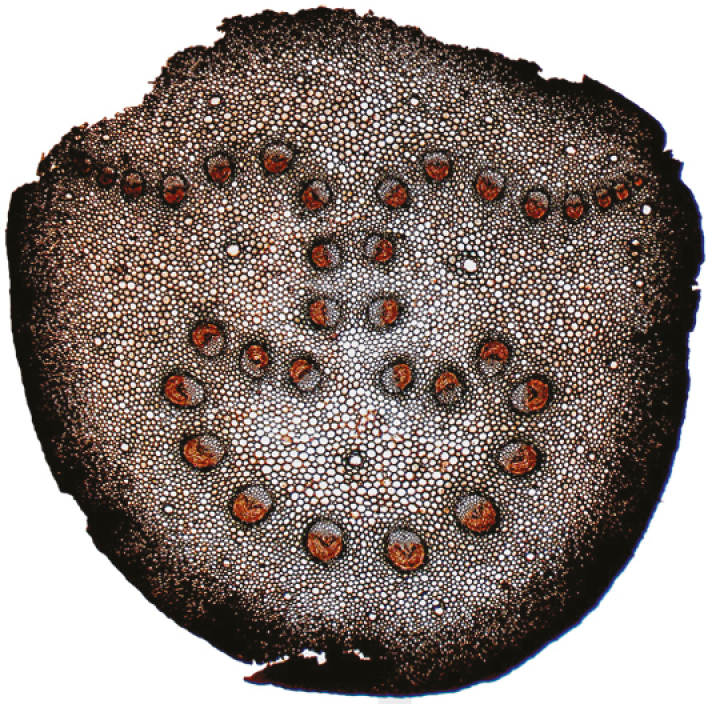
Annals of Botany 121: 483–488, 2018
doi: 10.1093/aob/mcx181
The ancient order Cycadales (“cycads”), have a pattern of vascular bundles in the leaf axis, seen in transverse section as an inverted “omega”. In the genus Cycas, Tomlinson et al. recreate this system as a 3-dimensional pattern based on images of sequential sections. Each leaflet is supplied by a single trace, from adaxial bundles, renewed by migration of abaxial bundles, which do not interconnect. Distal leaflets are not at a hydraulic disadvantage because they have a direct hydraulic supply. This approach provides a method for comparison with other extant genera, all of which show leaflets supplied by multiple vascular bundles.
Authors: P. Barry Tomlinson, Alison Ricciardi, and Brett A. Huggett
Rapid ecological diversification of the Eurasian goldenrod complex
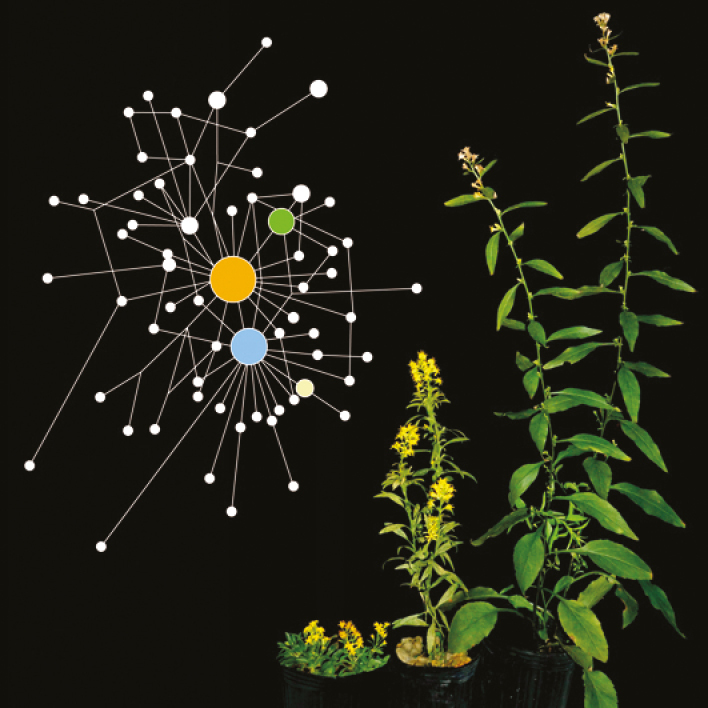
Annals of Botany 121: 489–500, 2018
doi: 10.1093/aob/mcx182
The Solidago virgaurea complex shows remarkable morphological and ecological diversity in Japan. Phylogeographic analysis suggested the multiple expansions from the Eurasian continent into the archipelago via land bridges, followed by lineage diversification within the island chain. Its genetic structure corresponds to the geography, but interestingly there is no concordance between genetic and ecotypic boundaries. Sakaguchi et al. propose that the traits specific to the ecotypes are maintained by natural selection, or were very recently generated and have little effect on the genomes. This study shows that the goldenrod complex has a high ability to evolve, enabling rapid ecological diversification over a recent timeframe.
Authors: Shota Sakaguchi, Takuma Kimura, Ryuta Kyan, Masayuki Maki, Takako Nishino, Naoko Ishikawa, Atsushi J. Nagano, Mie N. Honjo, Masaki Yasugi, Hiroshi Kudoh, Pan Li, Hyeok Jae Choi, Olga A. Chernyagina, and Motomi Ito
Variation in mānuka floral nectar composition
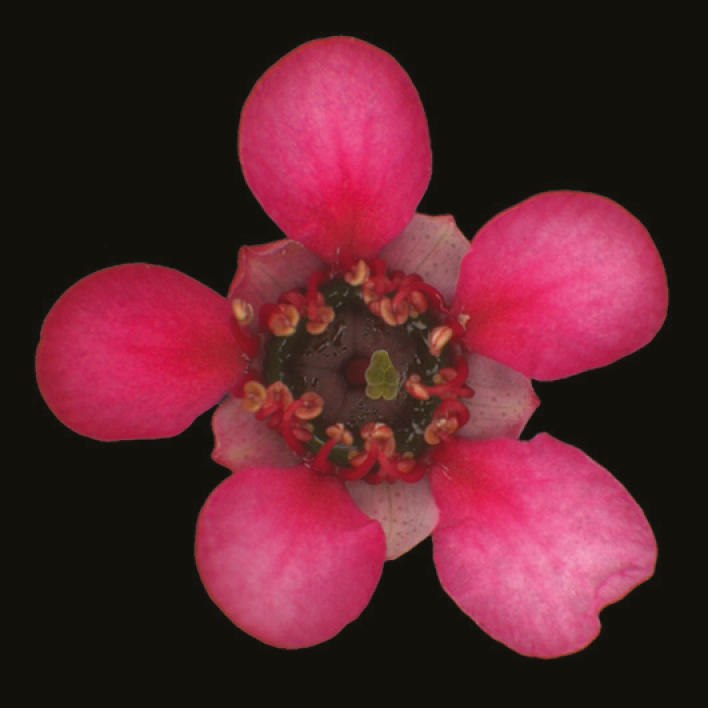
Annals of Botany 121: 501–512, 2018
doi: 10.1093/aob/mcx183
Variation in floral nectar composition influences the properties of the honey derived from it. The non-peroxide antibacterial activity of mānuka (Leptospermum scoparium, Myrtaceae) honey originates from dihydroxyacetone present in its floral nectar, but the causes of variation in nectar composition and the origin of the dihydroxyacetone are unknown. Clearwater et al. show that nectar yield and composition vary with temperature, among genotypes, and as flowers develop because of differential secretion and reabsorption of the various nectar components. Nectar dihydroxyacetone appears to be synthesised and enter the nectar independently of fructose, glucose and sucrose.
Authors: Michael J. Clearwater, Maria Revell, Stevie Noe and Merilyn Manley-Harris
Pollen limitation and reproductive assurance in a fragmented landscape
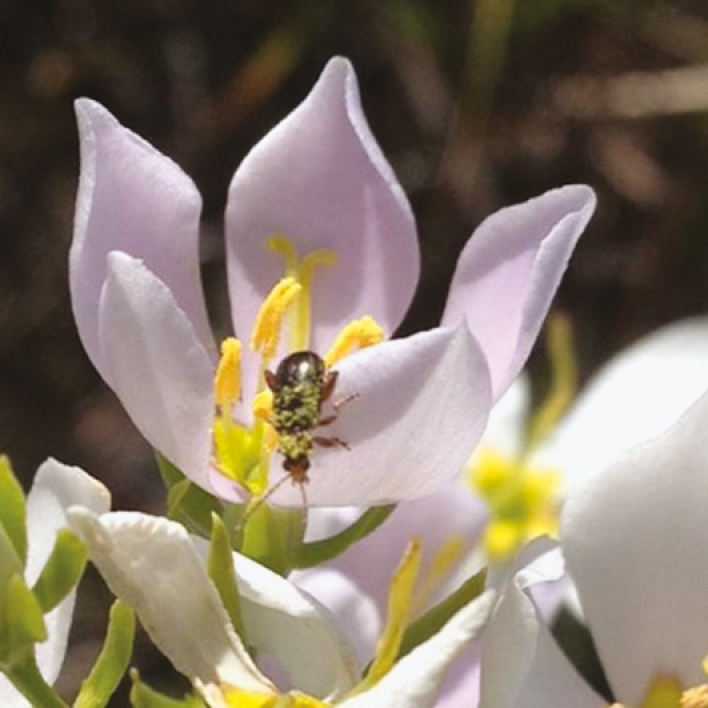
Annals of Botany 121: 513–524, 2018
doi: 10.1093/aob/mcx184
Humans have transformed landscapes, leaving remnant habitats embedded within a complex matrix. For many plants, the associated factors of decreased population size and increased land-use intensity surrounding them are expected to disrupt plant-pollinator interactions, limiting seed production unless plants can compensate through self-pollination. Spigler shows that increased reliance on self-pollination is predicted in small populations surrounded by intense development in the biennial Sabatia angularis (Gentianaceae). The roles of pollinators vs. antagonists are considered, together with heterospecific pollen transfer, and the resources that contribute to shaping this pattern. The results point toward self-pollen limitation and resource availability influencing the ability to rely on RA.
Author: Rachel B. Spigler
Two-stage patterning dynamics in conifer cotyledon morphogenesis
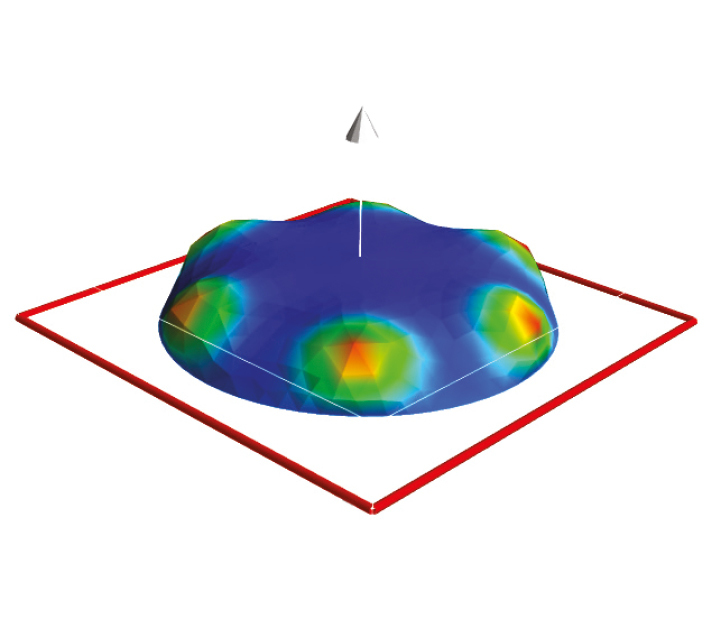
Annals of Botany 121: 525–534, 2018
doi: 10.1093/aob/mcx185
Conifers form a single whorl of multiple cotyledons (embryonic leaves), unlike monocots and dicots. Polar transport of the hormone auxin affects outgrowth of distinct cotyledons, but not the radial positioning of the whorl or the within-whorl spacing between cotyledons. Holloway et al. present a mathematical model of growth regulator patterning accounting for the response to auxin transport disruption, the stability of the single whorl over the large variation in embryo size, the linear relation between cotyledon number and embryo size, and early cotyledon morphogenesis. The conifer mechanism may apply more generally to single whorls of multiple primordia in other plants.
Authors: David M. Holloway, Ignacio Rozada, and Joshua J. H. Bray
Diversification of Dioon in the Mexican transition zone
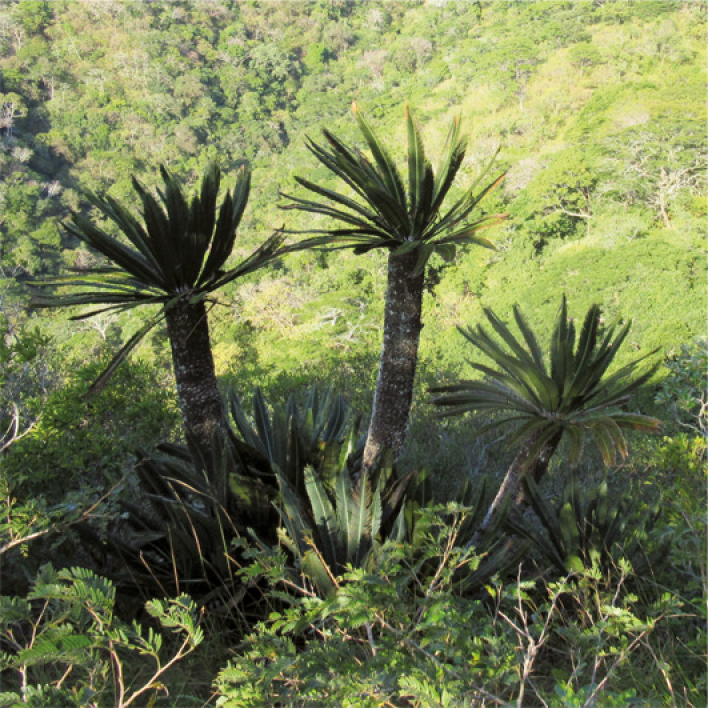
Annals of Botany 121: 535–548, 2018
doi: 10.1093/aob/mcx165
The Mexican transition zone originated from the overlap of the Nearctic and the Neotropical biotas. By analysing the genetic variation within the cycad genus Dioon, a relict Neotropical group, Gutiérrez-Ortega et al. test the association betweenthe diversification of Dioon with the biogeographic provinciality of the Mexican transition zone. The variation of two chloroplast DNA fragments and genome-wide single nucleotide polymorphisms reveals four Dioon lineages that are geographically structured. The reconstruction of the expansion of Dioon suggests that Dioon migrated along the mountain chains of Mexico. While dispersing towards their current distribution, each geographic region provided disparate ecological conditions that facilitated divergence and speciation during the Miocene period, around 15 million years ago.
Authors: José Said Gutiérrez-Ortega, María Magdalena Salinas-Rodríguez, José F. Martínez, Francisco Molina-Freaner, Miguel Angel Pérez-Farrera, Andrew P. Vovides, Yu Matsuki, Yoshihisa Suyama, Takeshi A. Ohsawa, Yasuyuki Watano, and Tadashi Kajita
Floral nectar tubes in Pelargonium
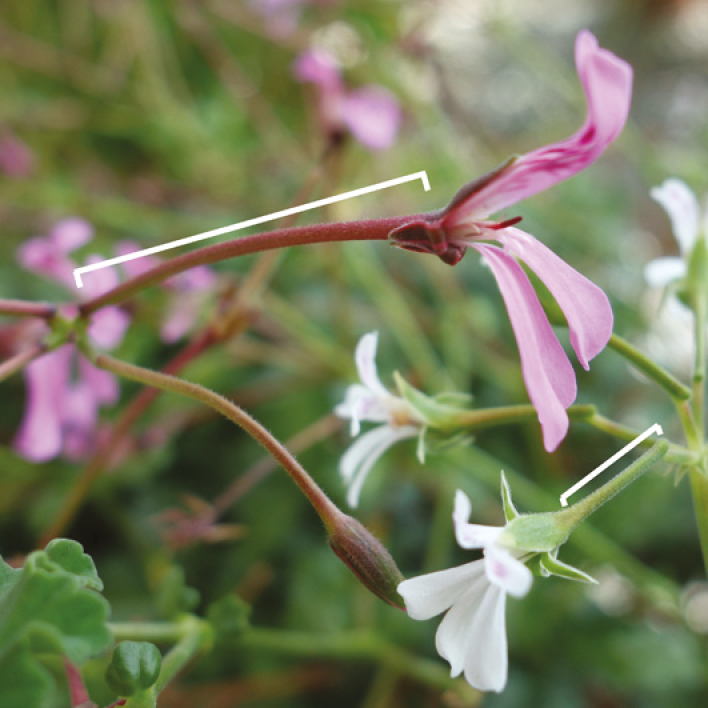
Annals of Botany 121: 549–560, 2018
doi: 10.1093/aob/mcx171
Co-evolutionary matches between lengths of floral nectar tubes and pollinator proboscises is associated with speciation in several lineages, including Pelargonium (Geraniaceae), a genus renowned for morphological variation. Tsai et al. investigate how differences in nectar tube lengths develop in two closely-related species. The Pelargonium nectar tube is unique among plants and arises from a localized invagination in the receptacle. Most subsequent elongation occurs in the tissue surrounding the tube late in development, just before flower opening. The authors propose that separation in time between initiation of the nectar tube and the phase of greatest elongation facilitated evolutionary diversification.
Authors: Timothy Tsai, Pamela K. Diggle, Henry A. Frye, and Cynthia S. Jones
Linking invasive–native plant competition to foraging and nutrient conditions
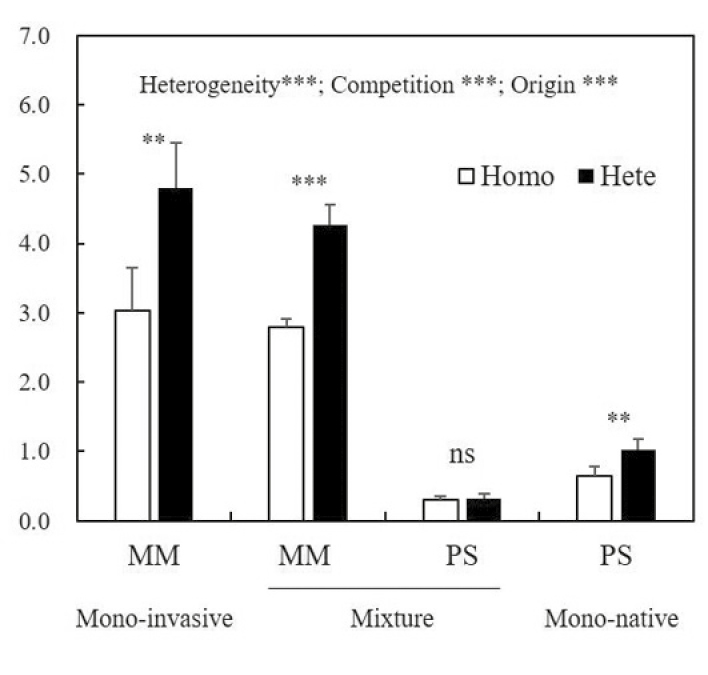
Annals of Botany 121: 561–569, 2018
doi: 10.1093/aob/mcx172
The effects of the competition between invasive and native plants have rarely been linked with root foraging behaviour. Chen et al. performed a competition experiment with two invasive-native species pairs (Bidens pilosa vs. Vernonia cinerea and Mikania micrantha vs. Paederia scandens) under homogeneous and heterogeneous conditions. The results indicate that soil nutrient heterogeneity has the potential to promote the invasion of these two exotic species due to their larger foraging scale, stronger competitive ability and greater root activity relative to their counterpart native species.
Authors: Bao-Ming Chen, Jin-Quan Su, Hui-Xuan Liao, and Shao-Lin Peng
The meiotic behaviour of doubled-diploid and the origin of triploid limes
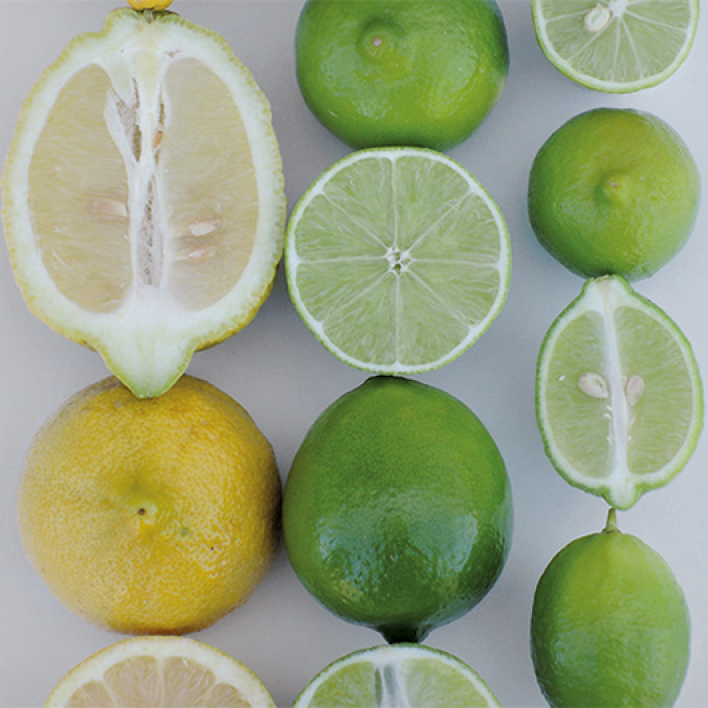
Annals of Botany 121: 571–585, 2018
doi: 10.1093/aob/mcx179
Lime is the only Citrus horticultural group including natural polyploid cultivars (C. latifolia and C. aurantiifolia) in addition to diploid species. Rouiss et al. uses cytogenetic analysis and molecular marker inheritance studies to reveal preferential chromosome pairing and disomic inheritance in doubled-diploid ‘Mexican’ limes (C. aurantiifolia) associated with their interspecific origin (C. micrantha x C. medica). The resulting diploid gamete structures are compatible with an interploid-cross origin of natural triploid limes. Interploid reconstruction breeding using doubled-diploid lime as one parent is a promising approach for triploid lime diversification.
Authors: H. Rouiss, F. Bakry, Y. Froelicher, L. Navarro, P. Aleza, and P. Ollitrault


